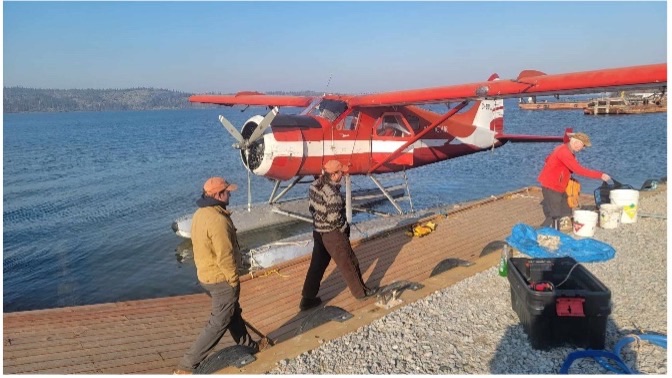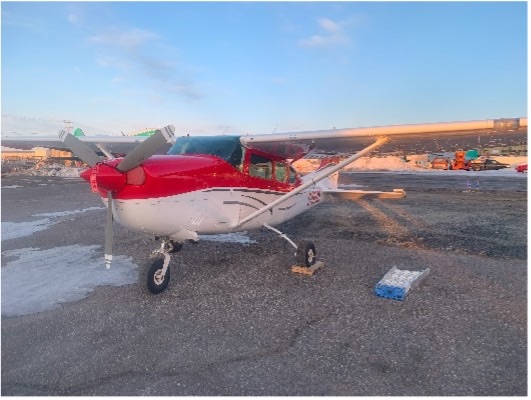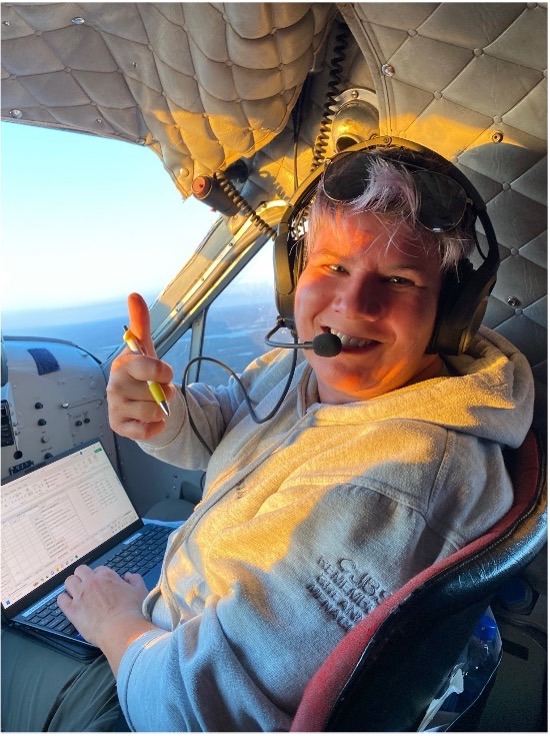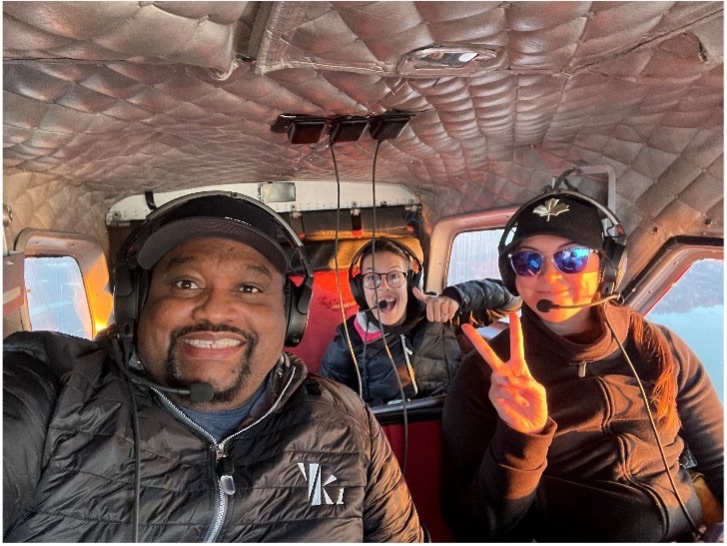Another Day On The Water
The call came to me, Dave Taylor, a Yellowknife based Search Coordinator and navigator. A plan is formed between the RCMP and me to search several areas which are near Yellowknife with flights starting the next day. The next day weather forecast is not great, and our sole CASARA pilot is not available. A check with the local charter operators results in a DHC-2 Beaver from Ahmic Air being available. This particular Beaver was manufactured in 1957, is on floats and is still equipped with the distinctive radial engine. It cruises at 90 kts and can carry a pilot, navigator, up to four spotters and fuel for 3-5 hours. It’s an aircraft type that we have used many times previously. A callout for crew is made, nine spotters and two navigators are available for parts of the next day. One navigator is short a pattern to be current. However, she’s also a current spotter. A couple of the female spotters available are also navigator trainees. We’ll need headsets, camera, 6-place intercom, Spot, inReach and the VHF-FM radio in addition to the standard navigator kit containing iPad, laptop and Bad Elf GPS.

The next morning dawns with wind, cloud, smoke and fog. We are unable to get our first flight off until almost early afternoon and sunset is approximately 6:30 pm this week. The temperature has been in the single digits dropping close to zero overnight, and obviously, plenty of moisture in the air. Prime weather for hypothermia. Overnight the RCMP have obtained pictures of the people and vessel and report that they had no gear or food with them. Due to the low ceiling, we can’t fly the 1,000ft, 2 nm track spacing that was planned, so we start at 500 ft and 1 nm instead, moving higher when it becomes possible. The crew on this flight is Dave, with spotters Monica, Howard and Anna and after 2 hours we’ve done a single pass of the high probability areas only spotting one boat, but photos suggest it isn’t the right one. There’s not enough daylight to do another flight, but the plan is to try again tomorrow.

Saturday starts off better, the overnight fog clears earlier, and our first flight starts mid-morning. Today, Jeff, our CASARA pilot with a Cessna 206, now on wheels, is available, but Monica still needs a pattern to get current as navigator. So, Jeff, Monica, and spotters Anna and Stephanie do a training flight to the western area of interest while Dave takes the Beaver and spotters Darren, Katie, Michelle and Dorota and does the eastern area. We can do anther flight to the west later. Kelly, our Hay River Zone Commander, relays communications for us, tracks our flights and contacts spotters for possible future flights. These two flights search the areas done previously and add some additional lower probability areas further away. A second pass over the search area is very important. All our aircraft have a blind spot directly underneath them, so a send pass offset from the first helps ensure we don’t miss anything. After a couple more hours of searching both flights found a few more boats but still not the right one. Again, the photographs passed on to the RCMP via email or text provide the clues that we have not found the right boat. We always photograph possible targets. The photographs can show us evidence of the people being in distress and if they appear to match the description. If we have cell service, we can relay the pictures to the RCMP and family to see if they think the photo is of their missing people. This is a critically useful function since the alternative is for the RCMP to charter a helicopter to investigate.
Meanwhile the Canadian Coast Guard Auxiliary (CCGA) has been active day and night checking some of the same places that we’ve searched and the RCMP continue to liaise with the family and investigate any clues that turn up. By mid-afternoon, still showing negative results, the RCMP request assistance from the Royal Canadian Airforce (RCAF) through the Joint Rescue Coordination Centre (JRCC) in Trenton Ontario. The JRCC offers to send a CC130 Hercules from 435 Transport and Rescue Squadron in Winnipeg to search parts of the Great Slave Lake basin with a shore crawl and some Creeping Line Ahead grids in some areas. The missing people were only supposed to be travelling about 12 nm from the city and so far, we’ve been as far as 50 nm to the west and 20 nm to the east. When they went missing the winds were from the south and east. Previous searches have shown that people can end up anywhere in the basin regardless of their original travel plans. The Hercules won’t arrive on-scene until sunset. The basin area the Hercules will be searching is approximately 20,000 sq km and it will take them all night to complete their search plan.

In consultation with the RCMP we decide there’s still time for another flight to the east going further than previous flights. Monica, now current as a navigator, takes the Beaver and spotters Katie, Jason and Jennifer to the southeast. Dave stays behind to relay messages, track the flight and start preparations for flights on Sunday. Less than an hour into the flight Monica reports a boat that closely resembles our missing vessel and forwards a photo, on closer inspection, it isn’t the right one, but while Dave is on the phone with the RCMP, she reports another boat that looks very promising, this is followed by a photograph which is relayed to the RCMP. It includes someone waving a red fuel can. The location is about 25 nm off the expected course and several hours travel time on the water from Yellowknife. Sunset is about an hour away and since float planes don’t fly at night our crew only have about 35 minutes remaining on-scene. It only takes minutes and the RCMP reports that the family thinks this is the right boat. JRCC has been notified and the Hercules has been tasked to investigate. The CCGA readies for another nighttime sortie to the location. Our crew is out of time, so after circling them about 10 times over 30 minutes they head home. Our involvement is done.

The successful conclusion of this search showcases the teamwork among the RCMP, CCGA, CASARA and the RCAF. At a debriefing with the RCMP and CCGA, Jennifer mentioned how all the training time really paid off and Katie relayed how exhilarating it was to see the missing vessel. Our zone, actually our MO, has a high female participation rate, 49 of our 80 members are women. This incident had a typical mix, of the 13 people involved 7 were women.
CASARA NWT has zones in Inuvik, Norman Wells, Yellowknife and Hay River. https://nt.casara.ca/en